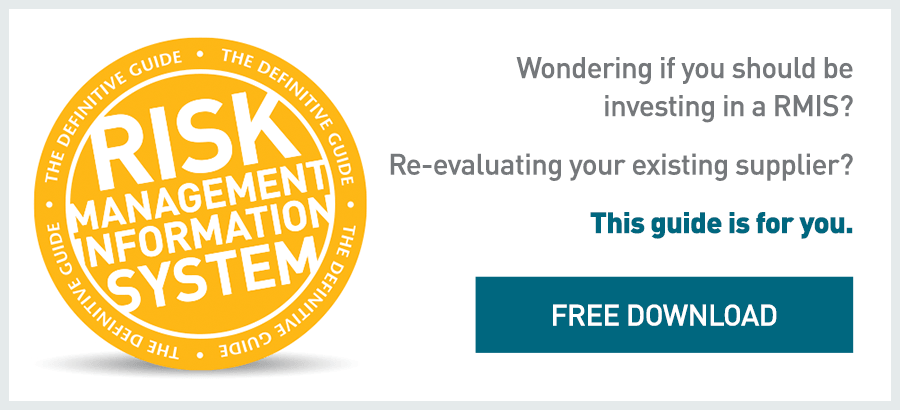 For those of us in the business of risk management information software, I think it’s important to remind ourselves that the value propositions we tend to take for granted as valid and relevant are not always compelling or obvious. Take, for example, a key message you’ll often hear from us: namely, that ready access to accurate, comprehensive risk data and insurance data—and the ability to analyze and report on that risk data—is of vital importance to risk managers and their organizations.
For those of us in the business of risk management information software, I think it’s important to remind ourselves that the value propositions we tend to take for granted as valid and relevant are not always compelling or obvious. Take, for example, a key message you’ll often hear from us: namely, that ready access to accurate, comprehensive risk data and insurance data—and the ability to analyze and report on that risk data—is of vital importance to risk managers and their organizations.
This past spring, Aon eSolutions introduced a low-cost risk management information system designed specifically for companies with annual revenues in the $1 billion and under range. As I’ve been speaking with risk managers at these organizations (sometimes called “the Fortune 1000” or “middle market”), I’ve been reminded that the importance of risk data needs to be proven just as any other value proposition requires.
Following are five reasons I like to share when making the case that leveraging risk data and insurance data should be a priority for most businesses, regardless of size.
- Effective use of valuable capital. When a company is over-insured, it’s spending more on premiums than it needs to. When it’s under-insured, a business pays out a lot more than if it had transferred the risk. In both cases, any CFO would say the company could be deploying its capital more effectively. As the markets continue to demand higher-quality risk data, it’s important for risk managers to have confidence in the completeness and accuracy of their risk data so they can see how best to finance their risk.
When a company has this kind of confidence in its data, it knows when program designs are sub-optimal. The company will also know when it’s getting the best possible rates. And it can focus on the right measures (like targeted loss-control initiatives) that promote optimal programs and the best rates.
- Not more, but better. It’s a frequent misconception that when we talk about providing the market with accurate, comprehensive data, we’re talking about providing a vastly greater volume of data. In fact, what we’re talking about is the importance of a company providing the market with better insights into its risk profile. We’re not talking about dropping hundreds of pages of more data on the insurer’s desk; rather, it’s about being able to say, for example, “Yes, our claims have gone down here, here and here, and this is why.” Or, “Last year I had X percentage of sprinklers at my properties, and this year I’ve increased it to Y percentage.”
- Easier negotiations with insurers. Better results. One thing I’ve heard frequently from risk managers at smaller companies is that they don’t see the need for a risk management information system because they don’t have high claim volume. Well, I see that as a limiting, claim-centric view. By contrast, following is a broader, risk-centric view: When a relatively low claim volume is combined with policy and exposure data, now you are arming yourself with a wealth of information that can make a significant, positive impact on renewals.
By combining claims, policy and exposure data, a risk manager is enabled to frame the company’s risk profile and tell the story he or she wants to tell and justify what the company wants (for example, a lower deductible or perhaps a higher deductible for a lower premium). It’s hard for a company to frame its risk story the way it wants to without having access to and control over data, which is something a RMIS gives.
- Visibility into self-insured losses. At many smaller companies, below-deductible losses are covered as a cost and may not be factored into the business’s insurance program or risk-management operations. The reason for this is that risk managers don’t always have the time or resources to gain visibility into their self-insured deductibles. A RMIS can rectify that with alerts and triggers that are focused on a company’s “need to know” and KPI factors. In this way, the company will be automatically informed of trends, which help risk managers know where to set deductibles and make better overall decisions on program design.
- Helping your broker help you. By capturing higher-quality, structured risk data, risk managers can focus more on risk management as opposed to just insurance procurement. Yet, the benefits can extend beyond the risk management team to the company’s broker. When a company gives its broker data that’s consolidated, comprehensive and credible well, the broker has more time to analyze the benefits of that data and negotiate in the market. On the other hand, when the broker is on a fixed fee basis and spends most of its time collecting and consolidating risk data, there’s often little time left to strategize on that risk data.













